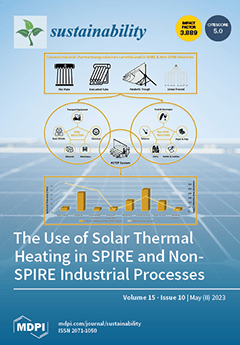The present study aimed to optimize the recovery of bound phenolic antioxidants from rice hulls via microwave-assisted alkaline hydrolysis using response surface methodology. The microwave treatment duration, temperature, and solvent:solid ratio were the independent variables selected; whereas total phenol content, antioxidant activity (DPPH
[...] Read more.
The present study aimed to optimize the recovery of bound phenolic antioxidants from rice hulls via microwave-assisted alkaline hydrolysis using response surface methodology. The microwave treatment duration, temperature, and solvent:solid ratio were the independent variables selected; whereas total phenol content, antioxidant activity (DPPH
●, ABTS
●+, CUPRAC assays), and the
p-coumaric and ferulic acids concentration were the dependent ones. The optimum conditions were found to be 3.6 min, 155 °C, and 50:1
v/
w which were then applied to hulls from different rice varieties cultivated in Greece [Gladio, Krezo, Scirocco, Karolina (two samples), Europa, Bravo, Bella (parboiled), and Fino (long-grain rice)]. The results were compared to those obtained using an optimized ultrasound-assisted alkaline hydrolysis protocol (120 min, 80 °C, 50:1
v/
w) proposed in the literature. The values obtained with microwaves were much higher compared to those obtained by ultrasounds (i.e.,
p-coumaric acid levels were 1.2 to 2.2-fold higher, and those of ferulic acid were 2.1 to 6.0-fold higher) using almost 2-fold higher temperature but reducing the hydrolysis duration by ~33-fold. Thus, the optimized approach may assist the valorization of rice hulls as a sustainable source of natural phenolic antioxidants for novel food applications.
Full article





